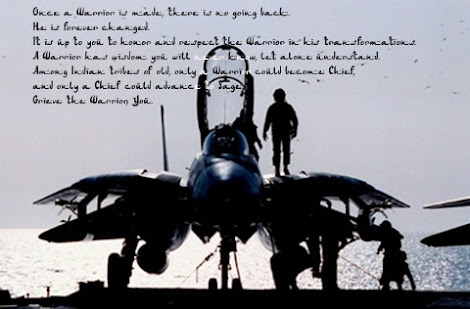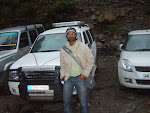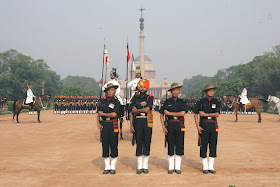The Fourth competitor in the line is EADS’s EuroFighter Typhoon.
Eurofighter Typhoon is a multinational defence project with active participation by Britain, Germany, Italy and spain. It is a fourth plus-plus generation aircraft currently optimized for the air-air role through its performance characteristics and what is by all accounts an excellent pilot interface. It has “supercruise” capability of being able to exceed Mach 1 without using afterburners, though some analysts have cast doubt on how sustainable that is. Some observers believe that aside from the F-22A Raptor, the Eurofighter is the next-best in-service air superiority aircraft world-wide

, though the 2007 Indra Dhanush exercise that matched it up against the SU-30MKI makes that a rather debatable claim. More Over the ability of Super Cruise can only be used when the aircraft is clean ie; without any payload. Mean while, Tranche 2 upgrades are giving it more multi-role capability, and India’s delay has given those developments more time to mature.New Air-to-Ground missons and Air-to-Sea missions are added and developed to strengthen it’s multi role abilities. The aircraft is constructed of carbon fibre composites, glass-reinforced plastic, aluminium lithium, titanium and aluminium casting. Stealth technology features include low frontal radar cross-section, passive sensors and supercruise ability.The foreplane / delta configuration is intentionally aerodynamically unstable which provides a high level of agility (particularly at supersonic speeds), low drag and enhanced lift. The pilot controls the aircraft through a computerised digital fly-by-wire system which provides artificial stabilisation and gust elevation to give good control characteristics throughout the flight envelope.But the most impressive is the aircraft’s cockpit technology.It cockpit employs high degree of automation through voice commands. The pilot's control system is a Voice-Throttle-and-Stick system (VTAS), which is a complete new system. The stick and throttle tops house 24 fingertip controls for sensor and weapon control, defence aids management, and inflight handling. The direct voice input allows the pilot to carry out mode selection and data entry procedures using voice command.The quadruplex fly-by-wire flight control system has an Automatic Low Speed Recovery System (ALSR) which provides the pilot with visual and audio low speed warning and will, if necessary, automatically take control of the aircraft and return to safe flight.This is also a new thing which may not find popularity with “maverick-type” fighter pilots.The BAE System’s Striker Helmet Mounted Symbology System (HMS) and head up display show the flight reference data, weapon aiming and cueing, and the FLIR imagery. BAE Systems TERPROM ground proximity warning system is used for terrain avoidance. Depending on role, the fighter can carry the following mix of missiles:
Air-superiority - six BVRAAM (Beyond Visual Range)/AMRAAM air-to-air missiles on semi-recessed fuselage stations and two ASRAAM short-range air-to-air missiles on the outer pylons
Air interdiction - four AMRAAM, two ASRAAM, two cruise missiles and two Anti-Radar Missiles (ARM)
SEAD (Suppression of Enemy Air Defences) - four AMRAAM, two ASRAAM, six anti-radar missiles
Multi-role - three AMRAAM, two ASRAAM, two ARM and two GBU-24 Paveway III/IV
Close air support - four AMRAAM, two ASRAAM, 18 Brimstone anti-armour missiles
Maritime attack - four AMRAAM, two ASRAAM, six anti-ship missiles
With respect to industrial offsets, BAE already has an order from India for 66 BAE Hawk trainers, 42 of which are being built in India. EADS Airbus might also be able to contribute on that front if it can provide some goodies for civial aviation sector.
Weaknesses include the aircraft’s expense, which may stretch India’s budget; the fact it’s a new aircraft type for the IAF so the entire support infrastructure would have to be developed and it lacks an AESA radar(CAPTOR AESA Radar is still under trails); its lack of naval capability( currently under develpoment; and the non-existent geopolitical benefits of selecting it. Given the Eurofighter’s performance and cost range, simply buying more SU-30MKIs would appear to make far more sense.






















